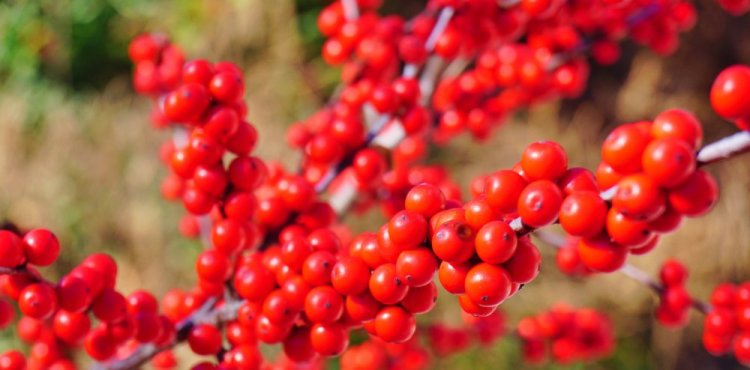When producers of a product can’t keep up with demand, it’s a sign that the product is popular. When that product happens to grow in the wild locally, the scarcity is shocking.
In a talk about native plants at the Maine Flower Show in late March, Dale Pierson, co-founder of the wholesale nursery in Biddeford and Dayton that bears his name, mentioned two native plants common in Maine wild landscapes that are so popular for landscaping projects they are in short supply commercially.
“If you’d told me when I started out (in 1973) that we’d sell a thousand sweetfern in a year, I wouldn’t have believed it,” Pierson said. But demand has been higher than supply for years because of the shrub’s versatility.
Despite its name, sweetfern (botanical name Comptonia peregrina) is not a fern. It is a tough, woody plant that grows about four feet tall, has feathery leaves that do look a bit like some ferns and thrives in dry, sandy soil.
To demonstrate the plant’s hardiness, Pierson related an anecdote about a project in which sweetferns were planted along with baptisia and Anthony Waterer spirea in the islands of a parking lot. All winter long, plow operators dumped snow on the plants, breaking many branches and stems, but the plants not only survived, they even looked pretty good come spring. Sweetfern can take the abuse because it spreads through suckering roots, re-sprouts if the plant is broken off at ground level and fixes nitrogen in the soil.
Sweetfern also does a good job controlling erosion on dry hillsides. Homeowners will find it useful next to roads and drives and on dry slopes. It is a no-maintenance native, although Pierson said that while the foliage is somewhat sparse, it can be made denser with pruning. I happen to like it the way it looks when you grow it with no care. It has a nice, spicy fragrance when you touch the leaves, too.
The other native in shorter supply than Pierson can ever before remember is the red maple, Acer rubrum. Although the red maple is sometimes called swamp maple, it does not require soggy soil to thrive.
Pierson said that people often get confused when they look at a red maple in the summer because its leaves are green. In autumn, though, the leaves turn fiery red and the blossoms in spring also are red, which is where it gets its name. Once, early in Pierson’s career, a client asked for red maples to line a long drive. Pierson lined up Acer rubrum. But as the project started, the client mentioned that he was excited to see the red leaves all year long.
“What he really wanted was ‘Crimson King,’ ” said Pierson, who made a quick substitution of Acer platanoides, “Crimson King,” which was commonly sold then but is now among the plants in Maine banned as invasive. Such experiences underscore the need for using the Latin botanical name of plants, he said.
In a tangent, Pierson used Acer rubrum as a way to discuss the ambiguous definition of the term “native plants.” Some people use it to mean native to a specific community. Others expand it to encompass a state, a region like New England or even an entire country. For his talk, Pierson defined native as native to New England, but he admitted he could make a good argument for any of these definitions.
But, he asked, is “Red Sunset,” which is a cultivar of Acer rubrum that is a brighter, more reliably red in the fall and holds its leaves longer, also native? From Pierson’s point of view, yes, because it was a variant that occurred naturally and has been propagated widely because of its desirable characteristics.
Pierson also reminded gardeners that just because something is native to their area doesn’t automatically mean it will thrive in their yards. Birches, for example, are a native tree that many Maine homeowners want, but many choose the wrong one. The beloved white birch, also called the paper birch, is Betula papyrifera. Yes, it’s native, but it fares poorly in Southern Maine because of the bronze birch borer, which – true to its name – bores into the bark and eventually kills the tree. While the paper birch does well in colder parts of the state, gardeners in the Greater Portland area should plant something else.

Highbush blueberry for sunny spots. Patjo/Shutterstock.com
The two best replacements, Pierson said, are the yellow birch, Betula alleghaniensis, and the river birch, Betula nigra, both of which are resistant to the leaf borer and other diseases. Their bark is cream or bronze-colored, not the pure white of the paper birch, but they are the smarter choice over time.
Pierson said that with the increasing popularity of natives, propagators are trying to create showier cultivars – sometimes called nativars – for home gardens. Inevitably, some will argue that those cultivars are not actually native, he said. But if you ask me, that doesn’t matter. If they look good, if you like them and if they don’t spread enough to bother your neighbors, go ahead and plant them in your garden.
Tom Atwell is a freelance writer living and gardening in Cape Elizabeth. He can be contacted at 767-2297 or at: tomatwell@me.com
Copy the Story LinkSend questions/comments to the editors.



Success. Please wait for the page to reload. If the page does not reload within 5 seconds, please refresh the page.
Enter your email and password to access comments.
Hi, to comment on stories you must . This profile is in addition to your subscription and website login.
Already have a commenting profile? .
Invalid username/password.
Please check your email to confirm and complete your registration.
Only subscribers are eligible to post comments. Please subscribe or login first for digital access. Here’s why.
Use the form below to reset your password. When you've submitted your account email, we will send an email with a reset code.